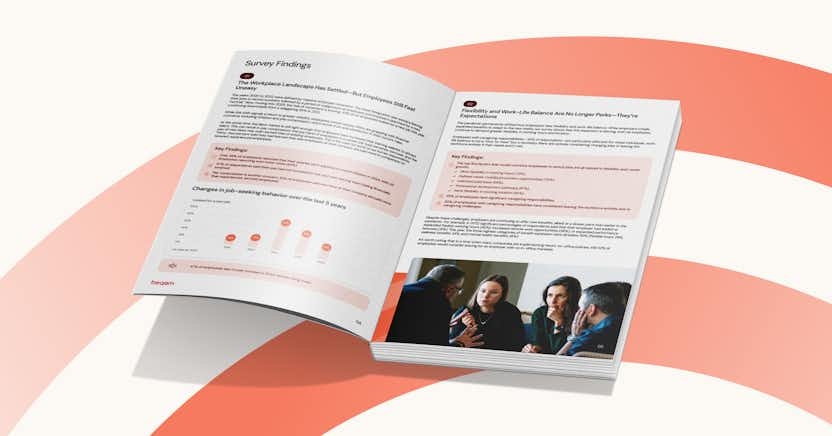Should You Be Looking at Best-of-Breed Compensation Software?

Having completed the annual comp cycle using your spreadsheet-based process or aging homegrown system, you may be determined to find a better way: easier, faster, more accurate, more compliant.
Or perhaps you've already implemented that new Human Capital Management (HCM) system and love it, but the compensation functionality isn't up to the task of managing the complexity of your global rewards programs. If so, you are not alone.
In short, you may be wondering if now is the time to up your game and investigate best-of-breed compensation software.
Compensation strategy is mission-critical
As post-pandemic labor shortages continue and competition for talent heats up, companies are increasingly recognizing the strategic value of compensation. According to Payscale’s Compensation Best Practices Report, 86% of organizations say they have a compensation strategy or are working on one — a 10 percent increase over last year and a 16 percent increase over previous years. Yet they also report that only “53 percent of organizations are fairly confident or very confident in the effectiveness of their total reward package to attract and retain talent.” In other words, nearly half of organizations are not sure whether their compensation is effective.
It's not about paying more. It's about being strategic with rewards and being able to customize compensation packages to meet the needs of a wide range of employees. Determine what your workforce requires and find a way to meet those needs.
beqom’s research shows that job expectations have changed since the pandemic, and not everyone wants the same thing. Men and women have expressed different needs, as have parents and single employees. Gen X, Millennials, Gen Z, and Boomers all have different priorities. One size does not fit all when it comes to effective rewards packages.
Supercharging your HR software suite
According to the Gartner Hype Cycle for Human Capital Management 2020, “... by 2025, 60% of global mid-market and large enterprises will have invested in a cloud-deployed human capital management (HCM) suite for administrative HR and talent management. But they will still need to source 20% to 30% of their HCM requirements from other solutions due to gaps in functionality.”
No system, including HCM or other core HR systems, can be everything to everyone.. The gaps will vary from company to company, depending on their needs and priorities, as well as the capabilities of their chosen HR software suite. Companies use best-of-breed software to fill the gaps in larger product suites.
Filling the compensation gap
As defined by Techopedia, a best-of-breed system is “the best system developed to address a specific niche or functional area.” Compensation is one of the areas where HR suites often fall short, especially for large organizations or companies where compensation is a key driver of performance. Such companies require flexibility and configurability in the design of compensation plans, which is fundamentally not possible with a fixed data model that forces your needs to fit into a box.
Even if the HR software can scale to handle tens of thousands of employee salary reviews, what about managing all the historical and benchmark data that goes into determining compa ratios? What if you had to manage dozens, if not hundreds, of bonus plans or sales incentive plans that are designed to motivate employees across roles, markets, and geographies? How do you deal with exceptions while maintaining a traceable and compliant system? How can you offer different reward packages to different segments of your workforce and still have a consistent, controlled framework?
Best-of-breed compensation management can make a difference by providing these, among other capabilities.
Investing in success
According to the Payscale report, 75% of organizations expect compensation will be more challenging and 70 percent correspondingly plan to invest more in compensation management. That’s a good start, but how will companies invest? What will make a difference? What does it take to implement a truly effective compensation system?
Of course, the goal is to find a solution that allows you to implement your compensation strategy without sacrificing quality and without risk-inducing side processes to deal with complexities or exceptions. This demands a thorough examination of your requirements across the board, taking into account not only your current state but also your vision of a best-practices rewards model.
From a technology standpoint, the system should fit easily into your systems landscape and integrate tightly with your core HR platform.
Finally, there is no substitute for expertise, and a solution provider should have it. Implementing a compensation system successfully demands a thorough understanding of what it takes to:
- design and model compensation plans,
- manage the different rewards processes efficiently,
- handle global complexity,
- manage data at scale,
- meet the needs of employees, managers, and other stakeholders.
- deliver a positive user experience,
- provide all the necessary reporting and analytics, and
- communicate effectively.
Look for a provider that knows compensation, and how to make it work.
Get started with compensation transformation
Leading organizations aren’t willing to compromise on compensation strategy. This is why so many companies have turned to beqom, a best-of-breed total rewards solution that works alongside common HR suites and ERP/HCM systems to provide the compensation management capabilities that successful companies need.
Book a demo with beqom today.















